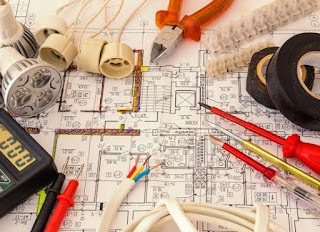Electrician's Tips to Redo Electricity Without Damaging the Walls
Renovating or updating the electrical wiring in your home is a significant task that can improve safety, efficiency, and functionality. However, the thought of damaging walls during the process can be a concern for many homeowners but with careful planning and the right techniques, electricians can redo the electrical system without causing unnecessary damage to your walls.
Les Entreprises Electriques EB share some tips to help you navigate this process smoothly.
1. Plan Ahead
-Assessment and Planning:
Before starting any work, conduct a thorough assessment of your current electrical system and determine the changes needed. Create a detailed plan outlining the locations for new outlets, switches, and fixtures to minimize surprises during the renovation.
-Consult Professionals:
Engage with a licensed electrician early in the planning stage. They can provide valuable insights, identify potential challenges, and recommend the best solutions tailored to your home's specific requirements.
2. Use the Right Tools and Techniques
-Wall Fishing Techniques:
For adding new wiring without damaging walls, wall fishing techniques are commonly used. This involves feeding wires through existing wall cavities using specialized tools such as fish tapes, rods, or magnet fishing tools.
-Wireless Solutions:
Consider wireless switches or outlets where possible to avoid the need for running new wires through walls. Wireless technology has advanced significantly, offering reliable solutions for many applications.
3. Cut Carefully
-Precise Measurements:
When cutting openings for new outlets or switches, measure carefully to ensure accuracy. Using templates or tracing existing outlets can help maintain consistency and reduce the risk of mistakes.
-Avoid Load-Bearing Walls:
Whenever possible, route new wiring through non-load-bearing walls to minimize structural impact. If running wires through load-bearing walls is unavoidable, consult with a structural engineer to ensure safety and compliance with building codes.
4. Protect Wall Surfaces
-Drop Cloths and Covers:
Use drop cloths, plastic sheeting, or cardboard to protect floors, furniture, and wall surfaces during the renovation. This will help prevent dust, debris, and accidental damage.
-Cut-Out Techniques:
When making cut-outs for electrical boxes, use techniques that minimize wall damage. Oscillating tools or jab saws can be effective for making precise cuts without causing extensive damage.
5. Professional Installation
-Hire a Licensed Electrician:
Electrical work can be complex and potentially hazardous. Hiring a licensed and experienced electrician ensures that the work is done safely, efficiently, and up to code.
-Permit and Inspection:
Always obtain the necessary permits for electrical work and schedule inspections as required by local regulations. This ensures that the work meets safety standards and compliance with electrical codes.
6. Test and Verify
-Test Continuously:
After completing the installation, test all new circuits, outlets, and switches to ensure they are functioning correctly. Address any issues promptly to avoid future problems.
-Document Changes:
Keep detailed records of all changes made to your electrical system, including wire paths, connections, and circuit configurations. This information will be valuable for future reference and potential upgrades.
Redoing the electrical wiring in your home can be a challenging task, but with proper planning, techniques, and professional assistance, it is possible to complete the project without damaging your walls. By following these electrician's tips, you can ensure a successful and efficient electrical renovation that enhances the safety and functionality of your home for years to come.
https://leeeb.ca/

.jpeg)


.jpeg)
.jpeg)
.jpeg)
Comments
Post a Comment